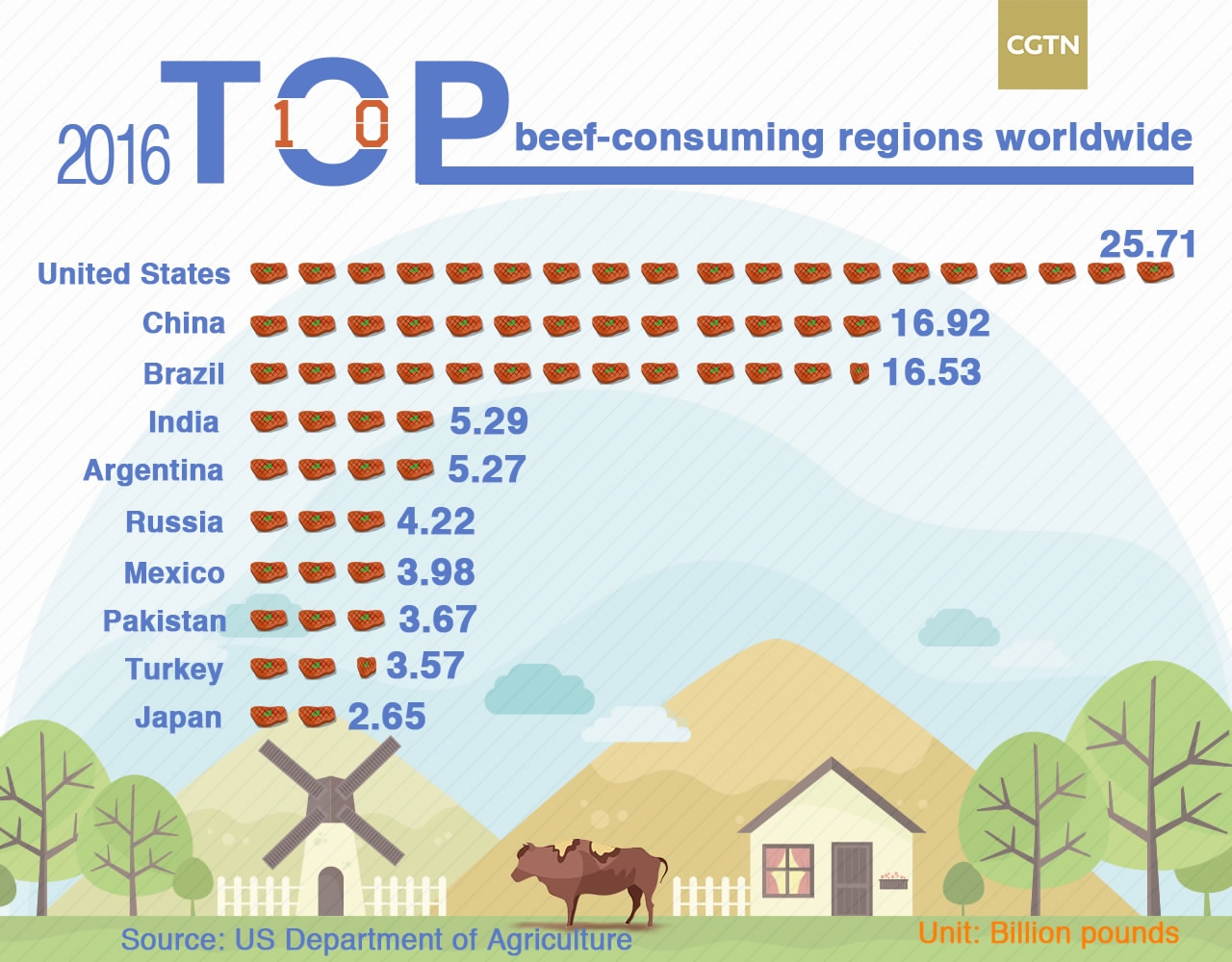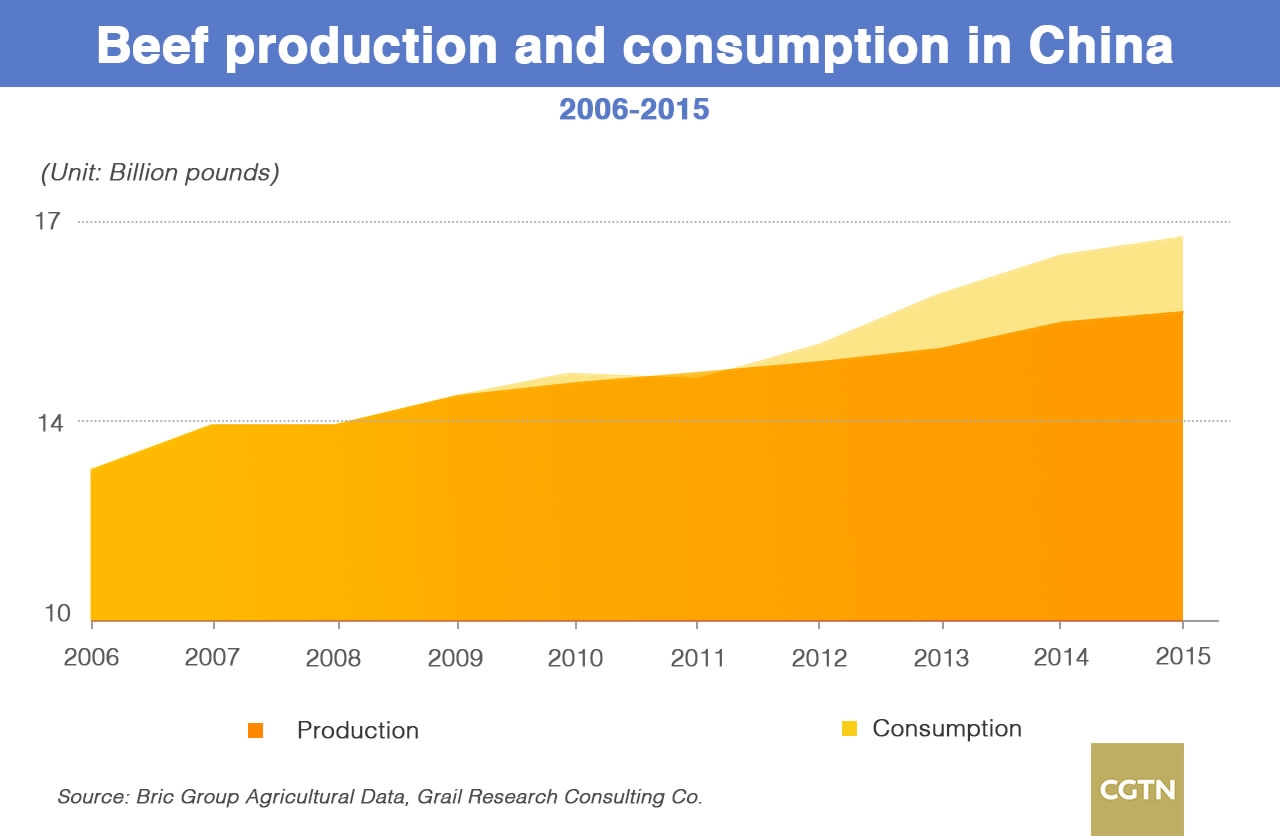The 100-day action plan for economic cooperation between China and the US was incepted during President Xi Jinping's summit with his US counterpart in Florida in April.
The two sides have since settled on initial commitments in a host of areas covering agriculture, financial services, investment and energy.
The ten initial steps were released in May, one month after the action plan was conceived. Both countries pushed some of the conversation further by discussing their "beef" over US beef exports to China during the China-US Think Tank Symposium held in Des Moines, capital of US state of Iowa, earlier this week.

Where is the beef?
Experts have said the proposed plan and the steps taken so far will deepen economic cooperation between the two countries by bringing down Washington's trade deficit of 347 billion US dollars with Beijing, removing barriers facing China's poultry exports to the US all the while promoting partnership under the Belt and Road Initiative.
What tangible benefits the plan would yield in the future remain to be known, but one thing is certain – the "steaks" have never been higher for beef trade.
The deal allows certain US beef products back on Chinese dining tables by mid-July, after a 14-year ban over mad cow disease.
China halted beef imports from the US in 2003, followed by other countries including Japan, Mexico and South Korea, closing a market that consumes around 64 million US dollars of imported beef in front of the US.
In the years that followed, China's appetite for beef grew at an exponential pace. In 2016, China's beef imports reached a whopping 2.5 billion US dollars. China is the world’s second largest beef consumer, after the US, consuming 16.92 billion pounds (7.67 million tons) of beef products annually.

"We strongly welcome the announcement that an agreement has been made to restore US beef exports to China," Craig Uden, President of the National Cattlemen's Beef Association, has said in a statement. "It's impossible to overstate how beneficial this will be for America's cattle producers, and the Trump administration deserves a lot of credit for getting this achieved."
The financial advantage the deal brings to the US is naturally visible, and while China's benefits are not as blatant, they're quite significant.
Beef demand in China has outgrown supply in recent years. In 2015, China’s consumption of beef products reached 16.53 billion pounds (7.5 million tons) exceeding local production by 1.1 billion pounds, and the gap is widening. Lifting the ban on US imports will allow China to tackle its supply shortage.

What to expect?
Price shapes demand for certain beef imports. Australian and New Zealand brands, representing half of China’s beef imports in 2015, were hit by price competitiveness of South American imports, which eventually took up about two-thirds of China’s total beef imports the next year.
Experts predict that beef from the US will be exported in relatively small quantities owing to higher prices, but as demand grows in China so would the quantities flown to the Asian country.
While one of the many hurdles facing bilateral trade has been settled, other issues such as Chinese exports aluminum and steel to the US are yet to be tackled.
"As concrete progress is made in implementing the actions under the 100-day plan, the two sides will begin discussing a one-year plan to further solidify actions in promoting US-China economic engagement and cooperation," the US Department of Commerce said in a statement last month.
The two sides should not wait too long before another round of discussion. The first meeting of the Comprehensive Economic Dialogue, which replaces the Obama-era Strategic and Economic Dialogue (S&ED), will take place in the next few months.
(CGTN’s Zhao Hong also contributed to this story)
Related stories:
China, US finalize deal lifting ban on US beef imports imposed after mad cow scare
US ranchers set to benefit from lifting beef ban
China-US trade ties are a win-win
Brazil confident in beef competition with US in Chinese market









